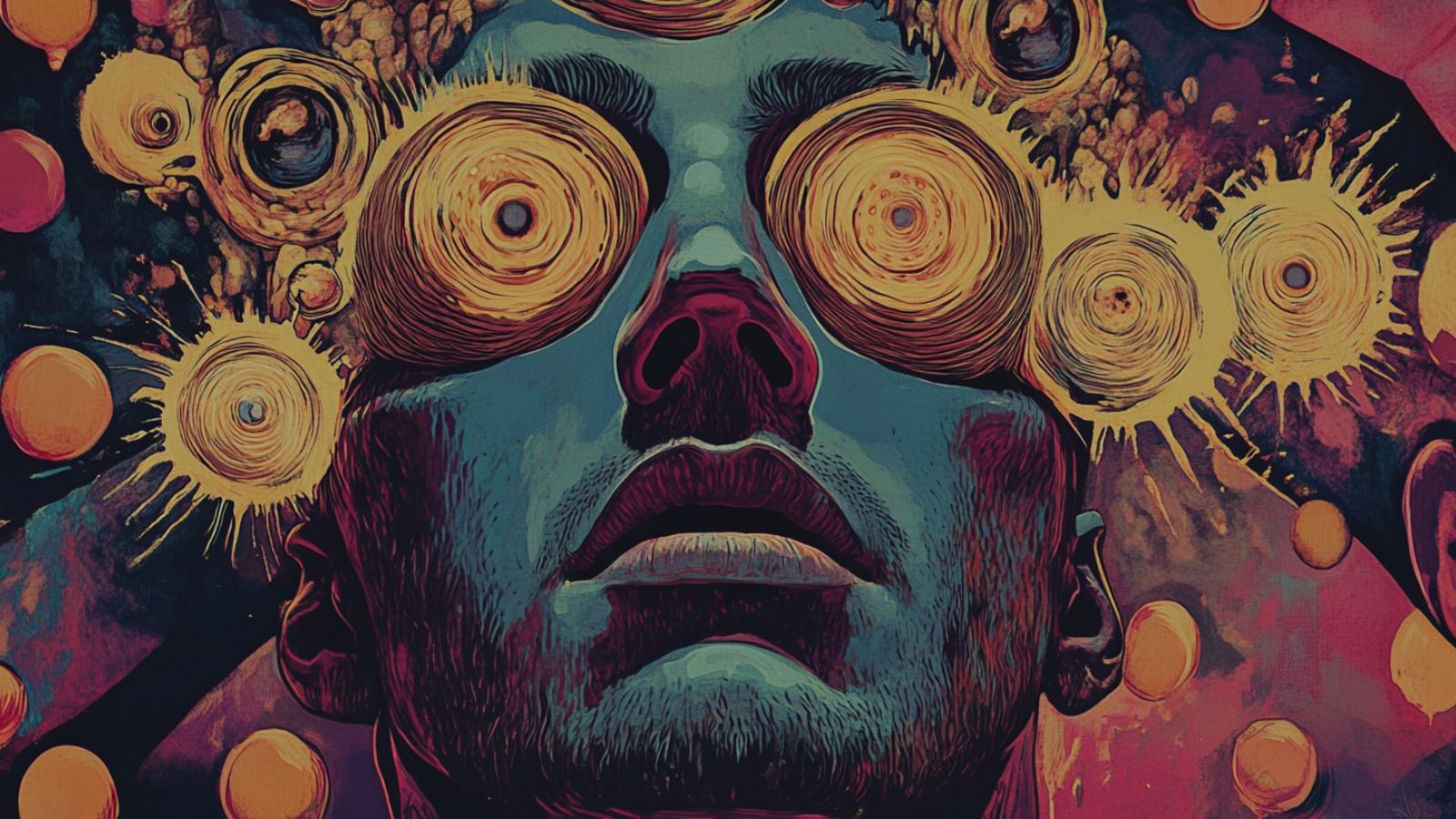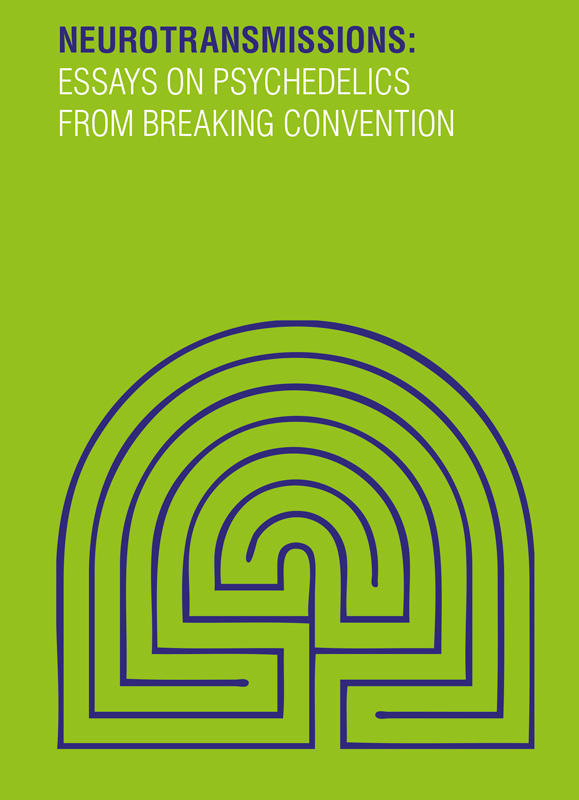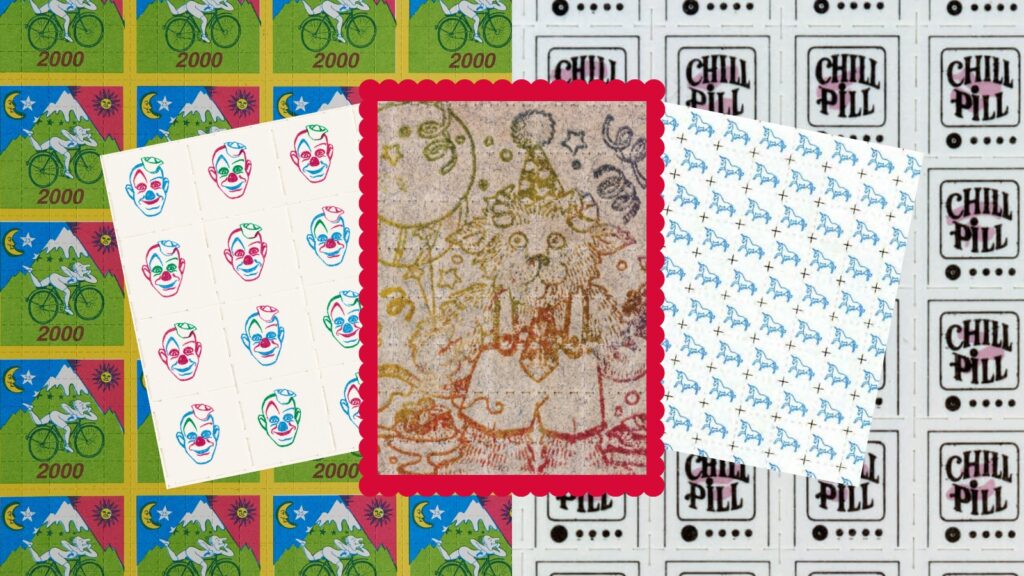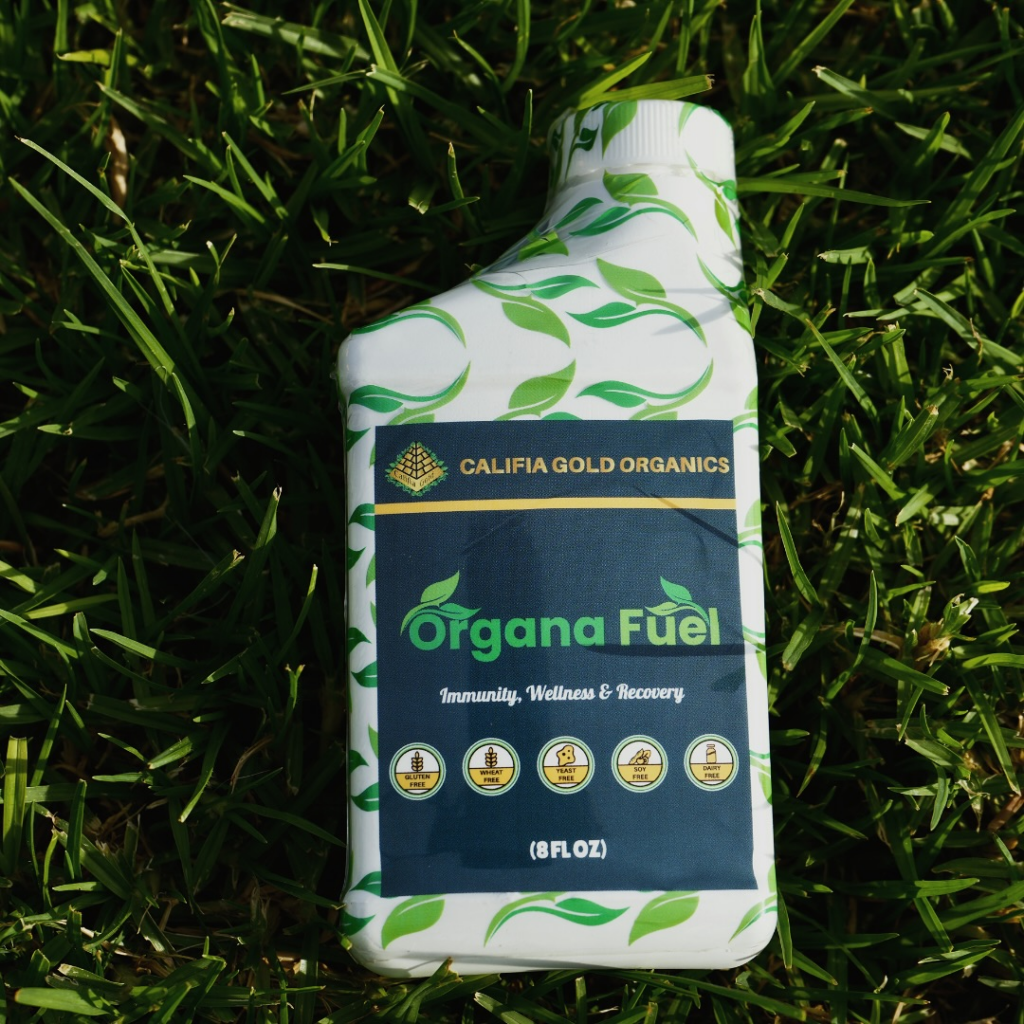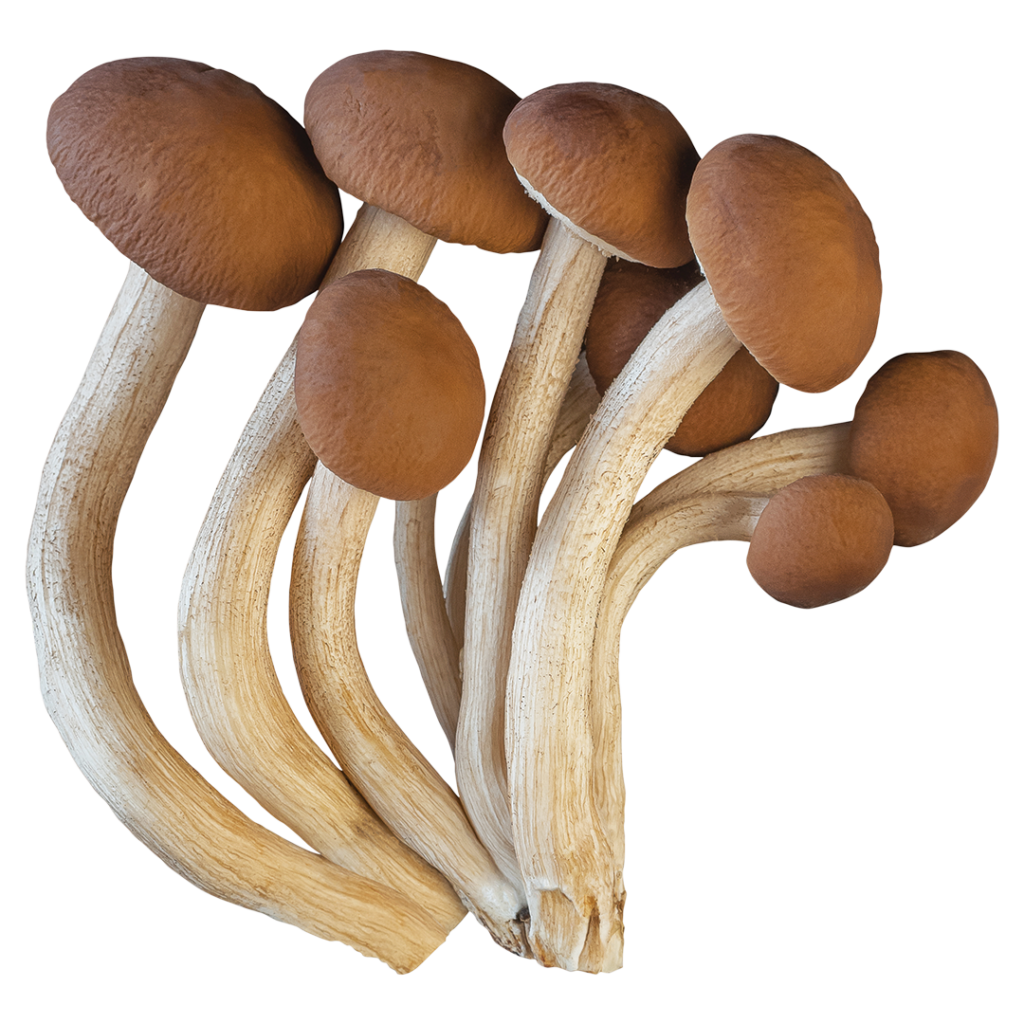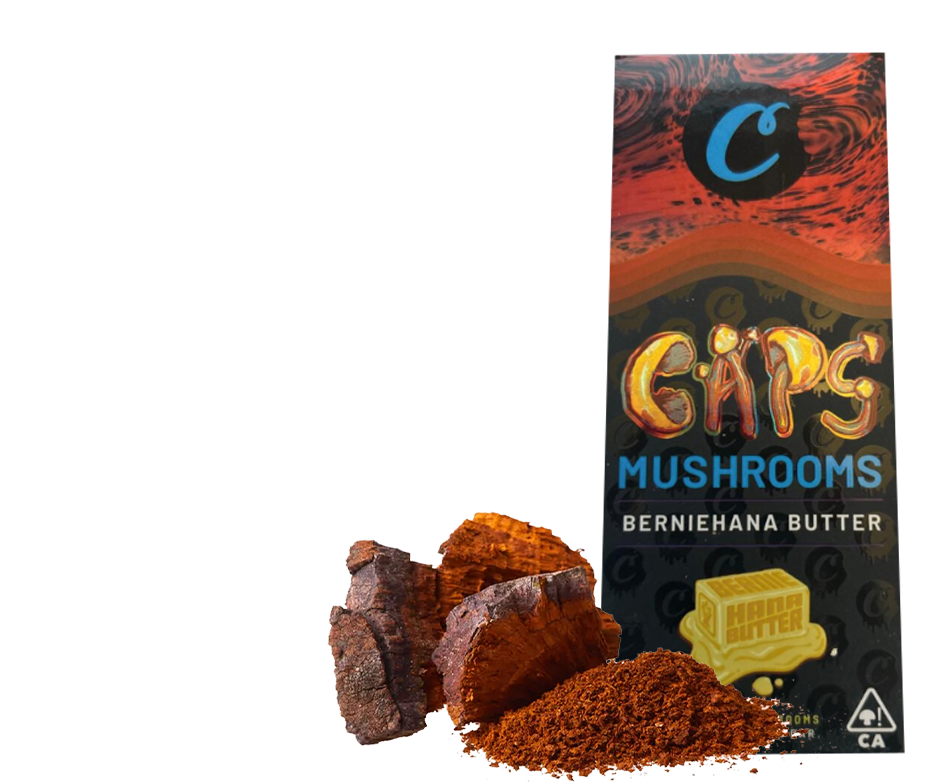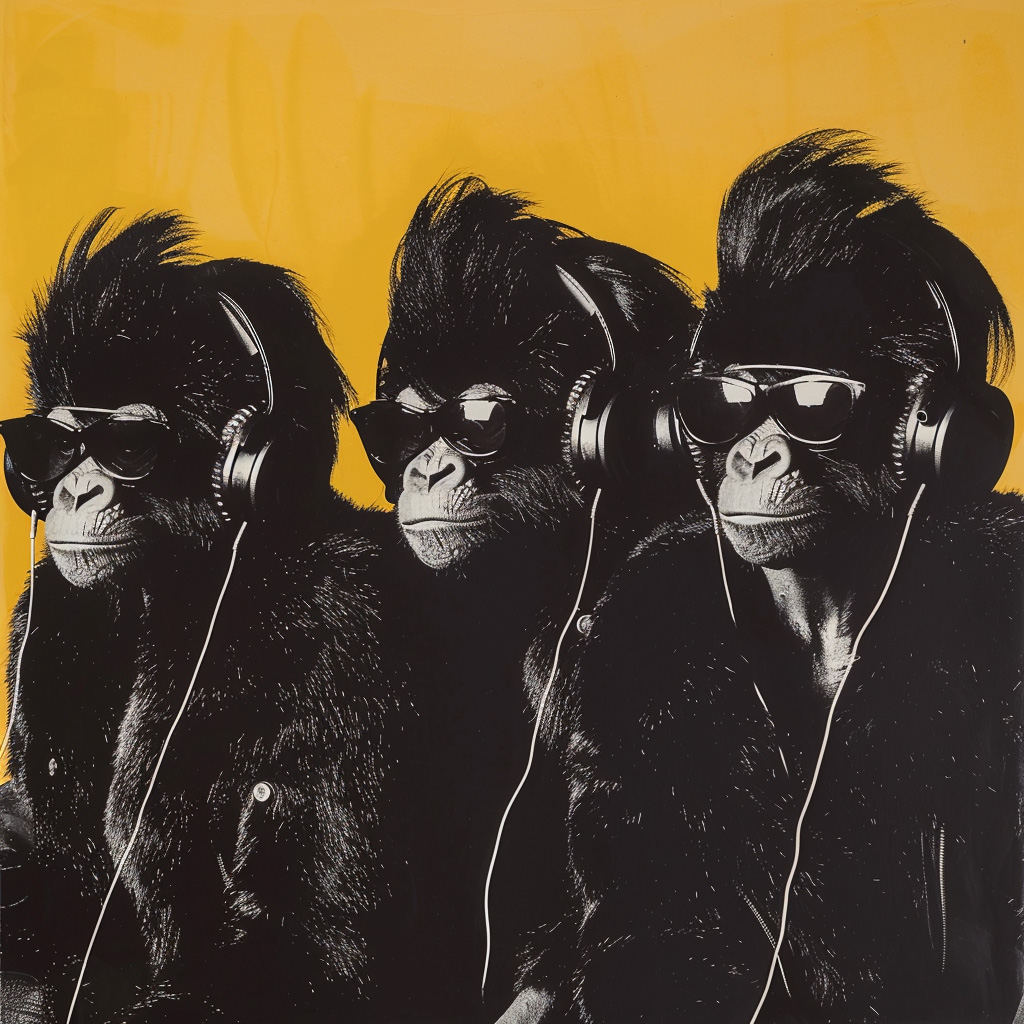Originally published in Neurotransmissions – An Anthology of Essays on Psychedelics from Breaking Convention.
The authors are indebted to Dr. Stephen Szára for kindly agreeing to an interview.
From a representative sample of a suitably psychedelic crowd, you’d be hard pressed to find someone who couldn’t tell you all about Albert Hofmann’s enchanted bicycle ride after swallowing what turned out to be a massive dose of LSD – the world’s first acid trip (Hofmann, 1980) has since become a cherished piece of psychedelic folklore. Far fewer, however, could tell you much about the world’s first DMT (N,N-dimethyltryptamine) trip. Although less memorable than Hofmann’s story, it was no less important. The folklore would come later and reveal itself to be far weirder than anyone could have predicted. A DMT trip is certainly one of the most bizarre experiences a human can undergo and, although six decades have passed since the very first DMT trip, the experience continues to confound and remains fertile ground for speculation regarding its significance and meaning (Meyer, 1997;Luke, 2011;Gallimore, 2013). Of course, it would be extremely Western-centric to ignore the use of DMT by indigenous Amazonians in the ayahuasca brew (Shanon, 2003;Frenopoulo, 2005;Shanon, 2005;Schmidt, 2012) or the cohoba snuff (Schultes, 1984), but it was only after the effects of the pure compound were discovered that its role in these traditional preparations became clear.
There has been a resurgence of interest in DMT in the last couple of decades, largely inspired by the baroque orations of the late psychedelic bard Terence McKenna, who regarded DMT as “the secret”; producing the most intense and bizarre experience a human could have “this side of the yawning grave”. Furthermore, although the endogenous production of DMT in humans has been established for several decades (Barker et al., 2012), attracting speculation as to its role in humans (Callaway, 1988;Wallach, 2009;Gallimore, 2013), recent research has provided more definitive evidence for a true functional role in human physiology (Frecska et al., 2013;Szabo et al., 2014). Dr Rick Strassman’s groundbreaking study of the effects of DMT in humans (Strassman et al., 1994;Strassman, 1995;Strassman et al., 1996) has been a particularly potent catalyst for speculation regarding the significance of this unique psychedelic. Strassman, a psychiatrist at the University of New Mexico’s School of Medicine, recruited 60 volunteers, the majority of whom received more than one dose of DMT by intravenous injection. This study was particularly special in that the subjective experiences of the volunteers took centre stage, with every detail of their trip narratives carefully recorded and many subsequently featuring in Strassman’s psychedelic classic, DMT: The Spirit Molecule (Strassman, 2001). Whilst being the most ambitious and extensive study of DMT in humans, it certainly wasn’t the first. For that, we’ll need to go back a few decades.

The first DMT trip
The story begins sometime in 1953. Hungarian physician and chemist, Dr Stephen Szára, was planning a study to investigate possible biochemical factors in the aetiology of schizophrenia (Szára, 1989). News of the remarkable mind-bending effects of Hofmann’s new lysergic acid derivative had already spread throughout the European medical community and Szára was keen to procure a small supply to use in his own research. He wrote to Sandoz, the only source of LSD at the time, to place an order. However, Hungary was firmly locked behind the Iron Curtain and Sandoz seemed wary of sending him the potent new drug. His request was politely refused. Szára needed an alternative:
“At this point, I sent an order to a British pharmaceutical house to purchase 10 grams of mescaline. To my surprise, and delight, the drug arrived in December 1955. I remember weighing out 400 mg of mescaline in the laboratory a few days before Christmas and took it home…” (Szára, 2014)
Having read and admired Huxley’s ‘The Doors of Perception’ (Huxley, 1954), Szára was keen to experience the effects of the drug himself. His choice of timing for his first mescaline trip now seems beautifully apposite:
“On Christmas Day I took it about 3pm. After about one hour I felt nothing, so I decided to go to the church on the top of the Castle-Hill in Budapest. On my way, on the bus, I started to feel that my vision had started to change; I was looking out through the window to the familiar landscape and seeing the trees moving in a strange way. When I got to the church I managed to get in, already full with people, standing room only. The ceremony had already started, loud organ music filled the air… to my surprise, as I was looking down to the marble floor, it was enlarging around me into a large circle, my neighbours seemingly far away, while I knew that I could touch them…” (Szára, 2014)
Suitably heartened by the experience, Szára turned his attention to a recently published article by a trio of analytical chemists, Fish, Johnson and Horning (1955), on the chemical constituents of the cohoba snuff, used by indigenous South American tribes to induce states of religious ecstasy (Schultes, 1984). Their analysis yielded only two major components; the first of these was the well-known toad skin secretion, bufotenine (Chilton et al., 1979). In typical 1950s style, medical double act, Fabing and Hawkins (1956), had already established the distinctly unpleasant, somewhat toxic and unimpressively psychoactive effects of this particular tryptamine by squirting large doses into a selection of unfortunate Ohio State Penitentiary inmates. Based on this data alone, it was generally assumed that bufotenine was responsible for the psychoactive effects of cohoba. Szára, however, was unconvinced.
The other major component of the snuff was the closely-related and pharmacologically unexplored alkaloid, N,N-dimethyltryptamine (DMT). It would be nice to write that Szára had a peculiar presentiment that DMT was the active psychedelic component of cohoba, but he didn’t. However, it was obvious that those seeking communication with the gods were hardly likely to be impressed by the dangerously hypertensive, choking and nauseating effects of bufotenine. DMT was the only alternative and so Szára decided to make some. As well as being a physician, Szára has a PhD in organic chemistry and, using the recently published synthesis by Speeter and Anthony (1954), was able to synthesise ten grams of DMT within a few days. Unlike his American counterparts, Szára chose himself as the first test subject (actually, he chose a cat, but we’ll skip that part). Mindful that Hofmann had considered 250μg of LSD a conservative first dose and ended up, in Szára’s words, “bombed out”, he opted for the same tiny amount, which he ingested orally. Of course, nothing happened. Over the next few days he gradually increased the dose up to 10mg/kg, or about three quarters of a gram. Still, no effect. Szára was somewhat discouraged and perhaps ready to abandon DMT when a colleague suggested that he should try injecting it:
“In April of 1956 (the exact day is unknown [Author note: April has a special significance in psychedelic history, with Hofmann first taking LSD on the 19th of April]), I tested three doses intramuscularly, paced at least two days apart to allow the drug to clear my body. The first dose (30 mg, around 0.4 mg/kg) elicited some mild symptoms – dilation of the pupils and some coloured geometric forms with closed eyes were already recognizable. Encouraged by these results, I decided to take a larger dose (75 mg, around 1.0 mg/kg), also intramuscularly. Within three minutes the symptoms started, both the autonomic (tingling, trembling, slight nausea, increased blood pressure and pulse rate) and the perceptual symptoms, such as brilliantly coloured oriental motifs and, later, wonderful scenes altering very rapidly.” (Szára, 2014)
Although Szára is unable to recall more details of this first experience, the trip had the typical DMT flavour familiar to contemporary users – complex geometric patterns give way to fully formed, immersive hallucinations. It was clear to Szára that this was the secret:
“I remember feeling intense euphoria at the higher dose levels that I attributed to the excitement of the realization that I, indeed, had discovered a new hallucinogen…” (Szára, 2014)
Strange new worlds: Szára’s first study
Szára wasted no time in beginning the very first study of the effects of DMT in human subjects. He recruited 30 volunteers, mainly doctors from the hospital where he worked, the National Institute for Mental and Nervous Diseases, Budapest. All received 0.7 mg/kg (about 50mg for an average person) DMT intramuscularly and their experiences carefully recorded (Sai-Halasz et al., 1958). Sadly, however, only a handful of these early DMT trip reports were published, purely as representative examples. The hospital has long since closed down, Szára’s contemporaries have all since passed away and all the original data has been lost. Despite this, the few surviving reports offer an invaluable insight into the experiences of those very first volunteers. For anyone familiar with modern DMT trip reports or, indeed, who has taken DMT themselves, these early accounts will resonate. However, rather than simply presenting these reports in isolation, it might be more interesting to contextualize them with selections from modern trip reports for comparison. It must be borne in mind that, although, to modern DMT users, the phenomenological content is certainly the most fascinating feature of the experience, the early DMT researchers were less aware of its significance. Szára, a self-confessed “old-fashioned scientist” and somewhat wary of “New Age stuff”, pointed out:
“When these experiences, such as God, strange creatures and other worldliness, appeared in our DMT studies, we did not philosophize about them but, as psychiatrists, we simply classified them as hallucinations.” (Szára, 2014)
As such, it is unsurprising that subjects weren’t pressed to elaborate on their visions and the reports can seem terse. In contrast, trip reports garnered from online databases and forums, such as Erowid or the DMT Nexus, are often characteristically detailed and sometimes frankly verbose. Despite this difference, the parallels between these early reports and those of modern users are nonetheless revealing. In Szára’s first study (Sai-Halasz et al., 1958), a 28-year old male physician (we’ll call him Adam) was one of the first to receive his 50mg dose:
“The room is full of spirits…the images come in such profusion that I hardly know where I want to begin with them! I see an orgy of color, but in several layers one after the other… Everything is so comical…one sees curious objects, but nevertheless everything is quickly gone, as if on a roller-coaster.” (Sai-Halasz et al., 1958)
Even this brief trip report extract features a number of fairly characteristic DMT motifs – the user is hurtled through a rapidly changing procession of complex visual imagery, meets discarnate entities (it is perhaps a reflection of the time that these were reported as ‘spirits’) and sees “curious objects”. The rollercoaster analogy is often used to describe the sense of moving extremely rapidly through the highly complex visuals as the trip unfolds. The following extract is from one of 340 modern DMT trip reports collected by Peter Meyer and an anonymous blogger known only as Pup, compiled from numerous sources and published online (Meyer and Pup, 2005):
“This was by far the most intense experiment that I had done and it was like riding a roller coaster through a fractal. As the trip was winding down I tried to concentrate on the designs as they flowed by and through me to check out the complexities. As one of the more interesting designs flowed by I focused on a circular design that morphed as I focused on it into an eye with a grinning mouth below it. The smile seemed more maniacal than friendly, but was never less an amazing sight.” (Meyer and Pup, 2005, Report #36)
Many modern users find that, whilst being indescribably bizarre, the experience is often suffused with a sort of comical ambience – the maniacal grinning mouth in the above report is perhaps indicative of this – and it’s notable that Szára’s subject, Adam, also seemed to experience this. Timothy Leary, in his seminal 1966 article, Programmed Communication During Experiences with DMT (Leary, 1966), articulated this type of experience with characteristic eloquence:
“Eyes closed… suddenly, as if someone touched a button, the static darkness of retina is illuminated . . . enormous toy-jewel-clock factory, Santa Claus workshop . . . not impersonal or engineered, but jolly, comic, light-hearted. The evolutionary dance, humming with energy, billions of variegated forms spinning, clicking through their appointed rounds in the smooth ballet…” (Leary, 1966)
This contributor to the fabulous drug information website, Erowid, describes a strikingly similar scene:
“It was generally like a wacky toy factory. Gadgets, widgets, twirling machines, stair-step pattern, Escher-like “space” and tunnels and chutes. The beings would seem to go “look!” and I felt I was supposed to look.” (Erowid Experience #11258, 2001)
Even in the hospital setting of Strassman’s study, such madcap scenes were commonplace:
“Something took my hand and yanked me. It seemed to say, “Let’s go!” Then I started flying through an intense circus-like environment…there was a crazy circus sideshow — just extravagant. It’s hard to describe. They looked like Jokers. They were almost performing for me. They were funny looking, bells on their hats, big noses.” (Strassman, 2001, p169)
It is tempting to suggest that the “curious objects” reported by Adam are those that appear throughout the modern DMT trip report literature, often presented or revealed by elfish entities (we’ll come to these later!):
“A gaggle of elf-like creatures in standard issue Irish elf costumes, complete with hats, looking like they had stepped out of a hallmark cards “Happy Saint Patrick’s Day” display, were doing strange things with strange objects that seemed to be a weird hybrid between crystals and machines.” (Meyer and Pup, 2005, Report #19)
“I saw the most indescribably beautiful “objects” here. I was fascinated. The ‘elves’ seemed to want me to do the same thing that they were doing. It was frustrating.” (Meyer and Pup, 2005, Report #125)
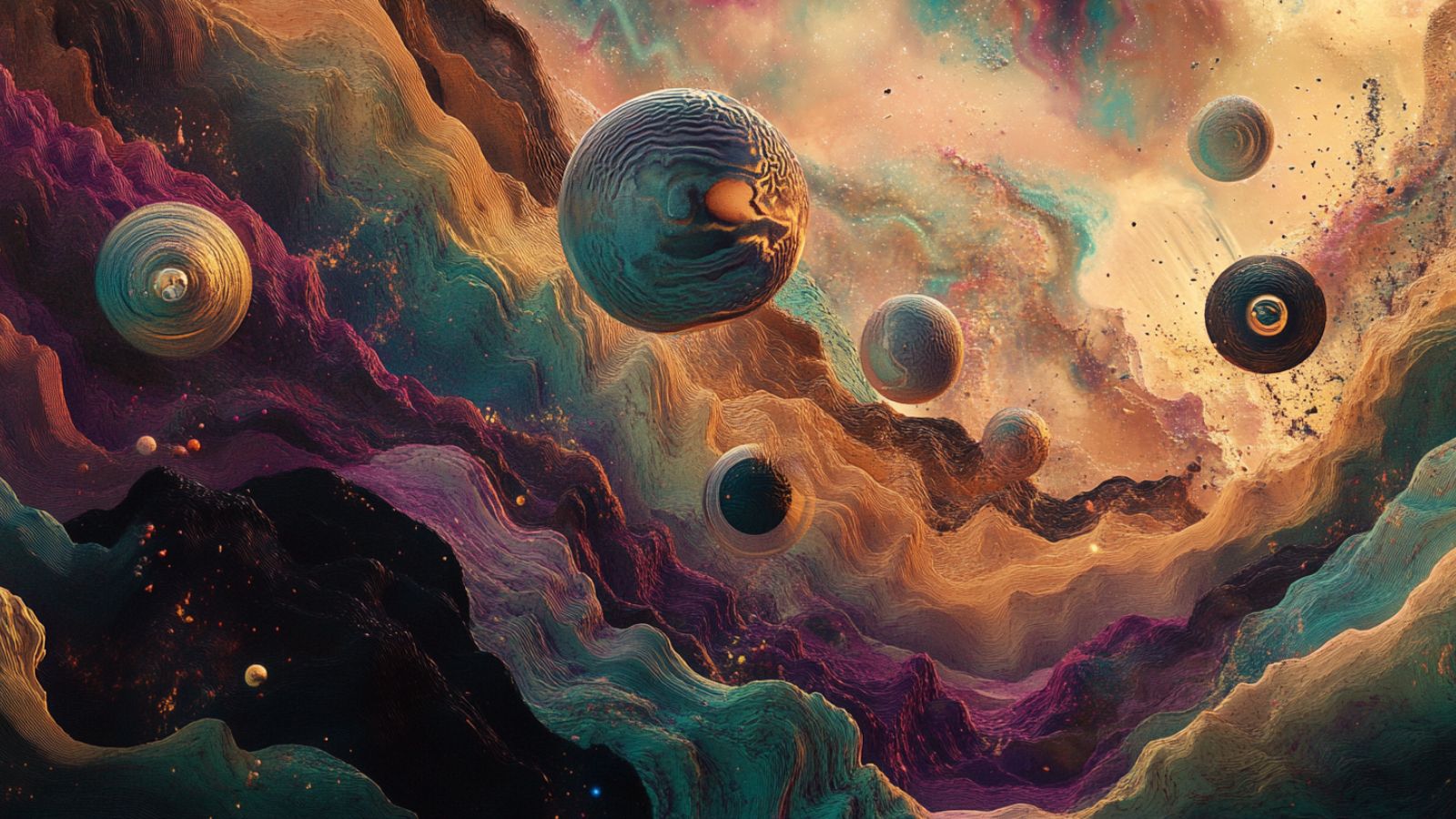
Early entity experiences
Of course, to anyone at all familiar with the DMT experience, it is not so much what you see that commands particular attention but, rather, where you go and who you meet there. A large proportion of DMT users, about 50% in Strassman’s study (Strassman, 2008), report travelling to normally invisible worlds and meeting an array of peculiar beings. Curiously, this type of experience was represented in Szára’s first cohort (Sai-Halasz et al., 1958), so might be considered as a core feature of DMT experiences, rather than a later counter-cultural affectation. A 27-year old female physician (we’ll call her Bella) describes the characteristic auditory effects that precede ‘breaking through’:
“The whistling has stopped; I have arrived. In front of me are two quiet, sunlit Gods. They gaze at me and nod in a friendly manner. I think they are welcoming me into this new world.” (Sai-Halasz et al., 1958)
Although this new world seems somewhat more sedate than the worlds many DMT users are familiar with, the sense of having arrived in another place is unambiguous, as is the presence of non-human entities. There is even an attempt at communication:
“One of the Gods—only his eyes are alive—speaks to me: ‘Do you feel better?’” (Sai-Halasz et al., 1958)
It’s intriguing that Bella described these entities as ‘Gods’, and tempting to speculate that they possessed qualities that inspired a sense of supreme power and wisdom. Entities with such qualities, whilst only occasionally referred to as Gods, are certainly common in the experiences of modern DMT trippers:
“There were these beings that seemed to inhabit this place, that seemed to come off as vastly more intelligent and vastly more capable.” (Erowid Experience #52797, 2006)
Sometimes these entities actually claim to have the sort of power we might expect from Gods – the power to create life – although their behaviour can often be less than godly:
“I did see intelligent insect alien god beings who explained that they had created us, and were us in the future, but that this was all taking place outside of linear time. Then they telepathically scanned me, fucked me, and ate me.” (Meyer and Pup, 2005, Report #213)
Later in the experience, Szára’s subject, Bella, moved into an enclosed environment:
“From the darkness I see through the black iron lattice into the bright temple.” (Sai-Halasz et al., 1958)
Whilst no further details are given regarding this temple, many modern DMT users report entering a place with a temple-like quality:
“There is a corridor with a very tangible ambience, one can feel the space around. It now appears to be a temple structure of some futuristic sort, like some space age Hindu/Mayan temple with the walls displaying architecture similar to the Pyramid of the Sun at Teotihuacan except the walls are inverted to angle outward with the terraces reversed. It seems very real but also very fleeting, changing rapidly.” (Meyer and Pup, 2005, Report #97)
Despite being somewhat brief and lacking detail, these earliest trip reports seem to hint at the type of experiences DMT users would describe decades later. This pattern continues with the studies that followed.
Horrible orange people
Once Szára’s first study was published, other physicians understandably became interested in DMT and began similar studies of their own. Turner and Merlis (1959) were interested in comparing the effect of pure DMT with those of the cohoba snuff. Their plucky recruits were convinced to inhale up to a gram of the snuff every 30 minutes, presumably until they could take no more. Unfortunately, neither subjective nor objective effects were observed, barring an awful lot of coughing and sneezing and general “discharging”. The DMT injections were more successful, although only a single trip report apparently merited publication. A 33-year-old psychotic female (we’ll call her Carla) was given 50mg DMT intramuscularly. Following a brief period of anxiety and an apparent struggle against the effects, Carla fell into a dreamlike state, before awakening suddenly after about 5 minutes. She appeared to regain awareness of her surroundings and was then able to relate her experience to the attending physician:
“It is as if I were away from here for such a long time… In a big place and they were hurting me. They were not human. They were horrible… I was living in a world of orange people…” (Turner and Merlis, 1959)
Of all the early DMT trip reports, this is one of the most intriguing. It isn’t unusual for DMT users to experience entities that appear less than benevolent, although it should be pointed out that Carla had a history of physical abuse. A number of Strassman’s volunteers also reported non-human entities with some degree of malevolent intent or, at least, that were either visually objectionable or performing some unpleasant act on the user. Insectoid creatures appear regularly:
“When I was first going under there were these insect creatures all around me. They were clearly trying to break through. I was fighting letting go of who I am or was. The more I fought, the more demonic they became, probing into my psyche and being. I finally started letting go of parts of myself, as I could no longer keep so much of me together.” (Meyer and Pup, 2005) #186
“With its innumerable eyes it gazed at me steadily and extended a tentacle. At the same moment it fired a beam of light directly between and above my eyes. The alien laser was pinkish-green. It hurt. I begged it to stop. I whimpered. Please stop, you’re hurting me…” (Meyer and Pup, 2005, Report #273)
Sometimes, the user appears to be the subject of some sort of experimentation:
“There were four distinct beings looking down on me, like I was on an operating-room table. I opened my eyes to see if it was you and Josette, but it wasn’t. They had done something and were observing the results. They are vastly advanced scientifically and technologically.” (Strassman, 2001, p194)
“I felt like I was in an alien laboratory, in a hospital bed like this, but it was over there. A sort of landing bay, or recovery area. There were beings. I was trying to get a handle on what was going on. I was being carted around. It didn’t look alien, but their sense of purpose was. It was a three-dimensional space… They had a space ready for me. They weren’t as surprised as I was. It was incredibly un-psychedelic. I was able to pay attention to detail. There was one main creature, and he seemed to be behind it all, overseeing everything. The others were orderlies, or dis-orderlies.” (Strassman, 2001, p197)
It was these ‘alien experimentation’ experiences that prompted Strassman to suggest, as others have, a relationship between DMT and alien abduction, during which the abductee is often subjected to painful experimental procedures, probing and measurements (Mack, 1994). However, despite some similarities, there are enough differences, including the absence of the classic ‘alien greys’ in the DMT state, to suggest that they are distinct (Luke, 2011). Although we have no further details as to the nature of the creatures that were ‘hurting’ Szára’s subject, Carla, it’s notable that accounts of negative interactions with non-human entities are not purely a modern feature of the DMT experience.
Enter the little people: Szára’s second study
As well as ‘normal’ subjects, Szára was also keen to observe the effects of DMT in some of the psychiatric patients at the hospital. There was a growing belief in psychiatry that these new “psychotogenic” agents, specifically LSD and mescaline, might be useful in the treatment of psychosis or at least as diagnostic tools. Szára selected 24 female in-patients, the majority with a diagnosis of schizophrenia, and all were given 1mg/kg DMT intramuscularly (Boszormenyi and Szára, 1958). Only three case reports were featured in the resulting publication and these were objective accounts of the patients’ behaviour after DMT administration, as recorded by the physician – any insight into the subjective experiences of the patients could only be gleaned from their spontaneous utterances. Despite this, one of the case reports is particularly salient. The patient was a 30-year-old female (we’ll call her Daisy) with “persecutory delusion and paranoid behaviour”. A few minutes after the DMT was administered, the typical auditory effects began:
“She complains of a strange feeling, tinnitus, buzzing in the ear…” (Boszormenyi and Szara, 1958)
It’s common for a buzzing or humming sound to accompany the initial stages of a DMT trip, an effect also observed during out-of-body experiences (Blackmore, 1989). With Daisy, a period of agitation and confusion followed – “she keeps asking, ‘Why do I feel so strange?’” – and then, after about 30 minutes, she seemed to indicate some loss of body awareness, also common in DMT users, which is echoed later in the session:
“As if my heart would not beat, as if I had no body, no nothing…” (Boszormenyi and Szara, 1958)
Then, around 38 minutes into the session, her head begins to clear and she is able to recount her visions:
“I saw such strange dreams, but at the beginning only… I saw strange creatures, dwarfs or something, they were black and moved about…” (Boszormenyi and Szara, 1958)
Reports of ‘little people’, described variously as elves, dwarfs, sprites or similar, are not only common during a DMT trip (Luke, 2013), they are perhaps one of its defining features. Of course, not everyone meets such beings, but ‘the elves’ are certainly the most famous denizens of the DMT realm. Terence McKenna’s expositions on these highly animated little creatures, which he dubbed ‘machine elves’, are legendary:
“Trying to describe them isn’t easy. On one level I call them self-transforming machine elves; half machine, half elf. They are also like self-dribbling jewelled basketballs, about half that volume, and they move very quickly and change. And they are, somehow, awaiting. When you burst into this space, there’s a cheer!” (McKenna, 1993)
McKenna also called them ‘tykes’, which perfectly captures their spritely and mischievous nature. Whilst ubiquitous, they appear in a variety of forms, ranging from amorphous light beings to the classic elves of Germanic or Celtic folklore. Despite this variability, they seem to be unified by their character:
“The new geometry began to unfold layer after layer of laughing, giggling, incredibly lively beings… greeting me with enthusiastic cheers… the countless wonderful, hilarious, animated self-transforming liquid light energy creatures vied for my attention… They actually all start waving and saying ‘goodbye’ and ‘Time to go, nice seeing you, Love you…’” (Erowid Experience #85120, 2010)
They even made an appearance in Strassman’s study, of course:
“That was real strange. There were a lot of elves. They were prankish, ornery, maybe four of them appeared at the side of a stretch of interstate highway I travel regularly. They commanded the scene, it was their terrain! They were about my height. They held up placards, showing me these incredibly beautiful, complex, swirling geometric scenes in them…They wanted me to look! I heard a giggling sound— the elves laughing or talking at high-speed volume, chattering, twittering.” (Strassman, 2001, p188)
Cott and Rock (2008) used thematic analysis to delineate the common themes within the DMT experience using anonymous volunteers. Although the accounts of only 19 respondents were analysed, the elves feature in one description of a scene that seems straight from a Brothers Grimm tale:
“Once I entered a room to see what looked like little elves working hard… I was watching these little guys work very hard on a bench, and they were building something.” (Cott and Rock, 2008, Respondent #16)
The elves, it seems, are everywhere…
Archetypes and the s/elf
Owing to Terence McKenna’s almost godlike eminence within the psychedelic community, and the gleeful enthusiasm with which he recounts their bizarre antics, it has become rather straightforward to dismiss the ubiquity of the elves as resulting from a sort of ‘McKenna effect’ – the little tykes ingress the subconscious of all who hear him speak, only to burst wildly into the frame shortly after the third toke. However, the appearance of animated dwarf-like creatures in at least one of Szára’s subjects, when Terence McKenna was but a sprite himself, might hint that such beings represent something more universal, and that perhaps McKenna wasn’t too far from the truth when he later claimed that “everybody gets elves”. Whatever their true nature, the elves have understandably attracted a range of interpretations, from simple hallucinations to truly autonomous sentient beings from an alternate dimension. Somewhere in between, the elves are sometimes explained as latent Jungian archetypes scuttling from deep within the collective unconscious (Luke, 2011). This is the explanation that Szára favours:
“To explain the possible origins of dwarf or elf-like creatures, I wouldn’t look for parallel universes or the “Quantum Sea” for explanation, but right in the brain, deeper than conscious memories …” (Szára, 2014)
Jung explained archetypes as “ever repeated typical experiences…stamped on the brain for aeons” (Jung, 1953). Anthropologist Charles Laughlin argues that these archetypes are encoded in neural structures present from birth and responsible for the experience of the foetus and infant (Laughlin, 1996). According to Laughlin, these ‘neurognostic structures’ are both inheritable and subject to evolution (Laughlin, 2000). Drawing on this theory, Gallimore (2013) proposed that DMT might be an ancestral neuromodulator that was once secreted by the brain in psychedelic concentrations during sleep and allowing access to, or the development of, neurognostic structures (encoded as patterns of neural connectivity) entirely separate from those generating the experience of the consensus world (this one!). Whilst this function is apparently now lost, smoking or injecting DMT may allow these ancient neurognostic structures to be ‘reactivated’, allowing us access to a world that is not so much alien, but from which we have become alienated. Szára has a comparable idea, suggesting that certain ancient archetypal structures might be suppressed during normal consciousness, with DMT allowing them to break through to the surface:
“C.G. Jung’s archetypes and symbols come to my mind as possible images, stored in neuronal connectivity patterns early in development. What DMT might do in adults is to slow down and stop reality testing (via the fronto-parietal loop) and let the Default Mode Network release the stored images and symbols into the perceptual system. It is the brain that stores and releases archetypal images into our altered consciousness…” (Szára, 2014)
He proposes that the elves might represent one of the most fundamental archetypes:
“I would suggest that the dwarfs and elves, that appear in many, if not most of the DMT experiences, are in fact symbols of one of the most significant archetypes: “the Self”, in the form of circles or Mandalas released from the Collective Unconscious. They may be projections of early “Selves” [Author note: we believe the pun to be intended] stored in the infancy of the individual when ancestral DMT dominated brain functions…” (Szára, 2014)
Of course, the idea that DMT somehow awakens deeply embedded archetypal structures remains highly speculative. However, Szára suggests that indirect evidence might already exist:
“There are actually some studies in neonatal rats (Beaton and Morris, 1984), showing that DMT can be detected at birth in low level, increasing significantly by day 12, staying high until day 31 and decreasing after this for the rest of their life. This is in line [with the model] postulated by Gallimore for the ancestral role for DMT. Obviously, this kind of data should be replicated in rats and in other animals as well as in humans if possible before the hypothesis gains credibility…” (Szára, 2014)
If the brains of human neonates secrete significant quantities of DMT, albeit temporarily, is it possible that the newborn child is able to access the DMT realm, but loses this ability long before memories can be laid down? It is intriguing that many DMT users feel a profound sense of déjà vu upon breaking through:
“The DMT space has a familiar feel to it. When I go to the DMT space, I often think, now I remember, this is where I have been before…” (Meyer and Pup, 2005, Report #18)
The experience of déjà vu in healthy individuals is thought to result from a disruption of the normal familiarity signal that underlies recognition (O’Connor and Moulin, 2013). However, there is no agreement amongst psychologists and cognitive neuroscientists as to whether there is always an overlap between the perceptual experience (the DMT experience in this case) and a previously stored representation, and thus whether the experience of déjà vu stems, at least partly, from an actual memory (O’Connor and Moulin, 2010). Perhaps, in the case of DMT, it’s not so much déjà vu as access to an authentic, albeit latent, memory trace. Perhaps we really have been there before. Maybe this is why the elves often welcome the tripper back with great celebratory uproar:
“They kept saying welcome back and words like: the big winner, he has returned, welcome to the end and the beginning, you are The One! As I looked around the room I felt the sense of some huge celebration upon my entry to this place. Bells were ringing, lights flashing…” (Erowid Experience #1839, 2000)
It’s rather uncanny that many of the themes that regularly appear in the DMT state are those we might naturally associate with childhood – clowns, jesters and jolly elves, playrooms and nurseries, fairgrounds and strange mechanical toys. Are small preschool children naturally attracted to small lively giggling characters (the outrageously popular Teletubbies, for example) because they remind them of similar creatures from the DMT realm? Something to think about.
Is there something-it’s-like-to-be a machine elf?
Explaining the elves and other DMT entities as latent Jungian archetypes or other structures from deep within the collective unconscious doesn’t seem to bring us any closer to knowing whether or not they can be considered real. Perhaps we need to look deeper. Jung himself proposed that fragments of the psyche, buried in the unconscious, might carry on a completely separate existence from the main complex. These autonomous psychic complexes form a miniature, self-contained psyche and are, perhaps, even capable of a consciousness of their own (Jacobi, 1959). This is a powerful idea. Descartes famously failed to deny his own existence, or at least the existence of his own mind. Neuroscientist Giulio Tononi seems to generalise this existential undeniability to anything possessing subjective consciousness. According to Tononi, whilst many things might be considered real, if something exists from its own subjective perspective – if there is something-it’s-like-to-be it – then it’s really real (Tononi, 2014); its reality cannot be denied. So, with regards to the reality or otherwise of the elves, perhaps we should ask: is there something-it’s-like-to-be a machine elf? If Jung’s autonomous complexes are to be taken seriously, then the answer is a very big and startling maybe. Maybe! And, if so, then the elves might not just be real, but really real! This might suggest that the elves could have intentionality and are actively seeking to communicate with us, even if the communicator turns out to be an alienated fragment of the communicatee. As McKenna (1991, p. 43) suggests, “we are alienated, so alienated that the self must disguise itself as an extraterrestrial in order not to alarm us with the truly bizarre dimensions that it encompasses. When we can love the alien, then we will have begun to heal the psychic discontinuity that [plagues] us.”
In an apparent attempt to transcend such philosophical speculation, computer scientist Marko Rodriguez proposed a methodology for experimentally testing whether or not DMT entities objectively exist – giving them advanced mathematical problems to solve (specifically, finding the unique prime factors of very large numbers) (Rodriguez, 2007). Rodriguez assumes that the highly advanced DMT entities (they very often appear extremely intelligent and technologically advanced) would waste no time showing off their computational prowess by feeding the correct answers to the expectant tripper, thus proving their objective existence. However, as Luke (2011) points out, it can’t be assumed that the tripper couldn’t receive the correct answers from some earthly incarnate source by a so-called ‘super-psi’ effect. Despite this shortcoming, this type of experiment might eventually prove useful in extracting information from the DMT entities that one might struggle to ascribe to our earthbound domain. In fact, perhaps the extraction of useful information would be a better standard by which to judge the objective existence or otherwise of the DMT reality and its inhabitants. Terence McKenna often sidestepped questions regarding the objective existence or reality of the entities and simply asked them: What can you show me?
Thinking the unthinkable
So far, we have avoided discussing the possibility that DMT might actually open a doorway to an alternate world and, for those of you rolling your eyes now, such an idea might be seen as frankly ludicrous. However, it can’t be ignored that a large proportion of DMT users, from Szára’s earliest subjects to modern amateur psychonauts, often arrive in the same type of world – highly artificial, constructed, inorganic, and in essence technological (Hancock, 2005) – and meet the same types of entities. If (albeit a big if) an experiment could be designed to extricate information from the DMT realm and ‘super-psi’ effects or other earthly sources could be ruled out, this might allow us to differentiate latent archetypes or other unconscious structures from a truly autonomous alternate reality. The results of such an experiment, if positive, would have profound implications for our understanding of reality. Obviously, it would be wildly astounding to discover that such a strange world exists and could well have existed long before our universe popped from nowhere (ahem) 14 billion years ago (“Give us one free miracle and we’ll explain the rest…” as Terence McKenna used to quip). However, there’s nothing in the laws of physics to rule out parallel worlds as such. The most astonishing revelation would not be the existence of such a world, but the fact that we had the ability to access it with such facility; by inhaling a couple of lungfuls of one of the simplest and most common alkaloids in the plant kingdom.
This revelation would force a far more fundamental paradigm shift in our understanding of reality and our place in it. The major problem with the alternate world explanation for DMT is what might be called the data input problem. There seems to be no obvious means for our brains to receive data from an alternate dimension and to explain such a phenomenon might require us to rethink the structure of reality itself. For example, the idea that we might live in a type of computer-simulated universe is actually now receiving serious academic consideration (Bostrom, 2003; Whitworth, 2007; Beane, Davoudi & Savage, 2012). Not only would many of the implicit quirks within the laws of physics be easily explained by a simulated universe (Whitworth, 2007), it might also be straightforward to explain how data normally disconnected from our reality program might be gated by a relatively simple subprogram (i.e. DMT). Perhaps, instead of looking for glitches or drifts in the physical constants of the universe (Barrow, 2003) to test the simulated universe theory, we ought to be looking for more explicit clues. And perhaps DMT is one of those clues. This would also naturally raise the question of intentionality – was the DMT subprogram deliberately embedded for us to find? And, if so, by whom and for what reason? We’ll leave this question as an exercise for the reader.
Of course, for those with no personal experience with DMT, it’s reassuringly straightforward to glibly dismiss alternate alien dimensions and disembodied intelligences as mere hallucination. Clever philosophical rhetoric, offbeat thought experiments and appeals to obscure Jungian manuscripts are unlikely to convince the DMT-naïve that there’s something far more interesting going on. The only reliable convincer appears to be somewhere comfortable to lie down for ten minutes and a small glass pipe.
OH MY FUCKING GOD!
Beyond the overwhelmingly rich, complex and fascinating visual content of the DMT experience, the elves and their strange hyperdimensional habitat seems to percuss the user at a point deep in the core of their being. The immediate response is often a profound sense of shock and the returning tripper, eyes wide and shaking, might struggle to verbalise anything beyond repeating “OH MY FUCKING GOD!” What is particularly interesting about DMT is that this shock is caused, not just by the bizarre nature of the experience, but by an unshakeable feeling of authenticity – the individual is unable to deny the reality of the experience; unable to dismiss it as hallucination or repressed memories bubbling up from the darkest corners of the unconscious mind. The most fundamental ontological assumption – that this earthly reality is the one and only real thing – is instantaneously shattered with little hope of being restored. The DMT reality feels real and is real, even after returning to normal consciousness.
The late Harvard psychiatrist, Dr John E. Mack, conducted detailed interviews and hypnotic regression sessions with over 200 so-called alien abductees. Despite not suffering from any known neuropsychological pathology that he could identify (i.e. perfectly sane), all of the abductees were uncompromising in their insistence that their experiences were real; that they had really happened. Similar to returning DMT trippers, this feeling of absolute certainty collided with their most basic assumptions regarding what was and wasn’t possible with such force that they were left in a state that Mack termed ‘ontological shock’ (Mack, 1994). Humans, sane ones at least, are extremely good at distinguishing reality from fantasy and the vast majority are quick to accept that a particularly strange dream was just that – a dream and not real. Whilst this reality-testing is impaired during dreaming and psychosis (Limosani et al., 2011), waking from the dream or recovery from psychosis is generally sufficient to restore this important ego facility and the dream or hallucination is recognised for what it is. This makes the DMT experience all the more compelling and paradoxical – it is far stranger than (almost) any dream and yet there remains a remarkable inability to shake the feeling that it was truly real once the experience has ended.
Harder, deeper, longer
Despite almost six decades having passed since Szára’s first study, we appear to be no closer to a definitive explanation for DMT’s astonishing psychoactive effects. It’s quite tempting to assume that the strangely characteristic DMT-like experiences that so many users report, from playful giggling elves to grotesque alien “pro-bono proctologists”, can be explained in terms of modern cultural memes that propagate through underground psychedelic literature, archival Terence McKenna lectures and, most recently, through the internet. However, the few surviving trip reports from these early DMT studies perhaps suggest that things are a little more complicated than that and therein lay their importance. DMT evokes experiences with a highly characteristic flavour and content that appear to be somewhat independent of the cultural setting in which they manifest, coupled with a frighteningly compelling sense of authenticity. Whether this points towards a truly autonomous alternate universe to which DMT somehow gates access or towards some deeply embedded structures within the human collective unconscious (perhaps both), or something entirely different, these experiences are far from trivial to explain and are certainly worthy of proper academic study.
Although psychedelic drug research is now recovering following a several decades long hiatus, the academic focus now tends to be on the neural correlates of the experience, rather than the experience itself. Whilst this research is important, there is the danger that the psychedelic state will be unwittingly explained away, neatly packaged as an interesting variant of brain network activity. This is wholly unsatisfactory and it is important that objective neuroimaging data is complemented by detailed phenomenological studies of the DMT state. The authors are currently performing a detailed (and long overdue) quantitative phenomenological analysis of Strassman’s original ‘bedside notes’ and such carefully recorded trip reports will likely form the primary data source in future research, although psychedelic researchers should be prepared to enter the DMT realm themselves with the aim of answering specific questions and performing experiments. After all, if you want a tiger’s cub, you must go into the tiger’s cave.
Terence McKenna exhorted psychedelic drug users to see themselves as explorers – You are an explorer, and you represent our species, and the greatest good you can do is to bring back a new idea, because our world is endangered by the absence of good ideas. Whilst a handful of lay psychonauts might manage to dive deep enough to bring back a few good ideas, this is really the psychedelic equivalent of amateur free diving and is ultimately limited by the lung capacity and training of the individual and the brief duration of action of the drug. There is perhaps an attractive romanticism attached to the idea of sitting cross-legged on a brightly coloured, hand-woven rug, lighting incense and raising a hand-blown glass pipe to the lips. But DMT seems to demand more from us than this. It appears to carry a message so shockingly profound and important that it demands careful preparation and skilful use of our technological apparatus to successfully retrieve and decode it. DMT is unique amongst the classical psychedelics in not only being very short acting, but also not exhibiting a tolerance effect with repeated use (Strassman et al., 1996). As such, using the same technology developed for maintaining a stable brain concentration of anaesthetic drugs during surgery, it would be feasible to administer DMT by precisely regulated continuous intravenous infusion, permitting the explorer an extended, and theoretically indefinite, sojourn in the DMT reality. Although a well-prepared strong ayahuasca brew might achieve a crudely comparable effect, standardisation of the dose is much more difficult and the concentration of DMT in the brain will fluctuate based on a range of pharmacokinetic and metabolic factors. A well-designed continuous IV protocol could account for these factors, allowing the brain DMT concentration to be kept stable or manipulated to gradually move the explorer deeper and deeper into the DMT space. This approach might give the brave voyagers enough time to orient themselves, get their intellective tools in order and cast their nets far out into the “dark ocean of mind” in the hope of bringing back the message that DMT has been trying to convey since Szára first dipped his toes in the water almost 60 years ago. If ever there was a time, it’s now. Ahoy, shipmates! Ahoy!
***
Barker, S.A., Mcilhenny, E.H., and Strassman, R. (2012). A critical review of reports of endogenous psychedelic N, N-dimethyltryptamines in humans: 1955-2010. Drug Testing and Analysis 4, 617-635.
Barrow, J.D. (2003). Living in a simulated universe. Available at: www.simulation-argument.com/barrowsim.pdf.
Beane, S.R., Davoudi, Z., Savage, M.J. (2012). Constraints on the universe as a numerical simulation. arXiv:1210.1847v2.
Beaton, J.M., and Morris, P.E. (1984). Ontogeny of N,N-dimethyltryptamine and related indolealkylamine levels in neonatal rats. Mechanisms of Ageing and Development 25, 343-347.
Blackmore, S.J. (1989). Beyond the Body: An Investigation of Out-of-Body Experiences. Chicago: Academy Chicago Publishers.
Boszormenyi, Z., and Szara, S. (1958). Dimethyltryptamine experiments with psychotics. Journal of Mental Science 104, 445-453.
Bostrom, N. (2003). Are you living in a computer simulation? Philosophical Quarterly 53, 243-255.
Callaway, J.C. (1988). A proposed mechanism for the visions of dream sleep. Medical Hypotheses 26, 119-124.
Chilton, W.S., Bigwood, J., and Jensen, R.E. (1979). Psilocin, bufotenine and serotonin – historical and biosynthetic observations. Journal of Psychedelic Drugs 11, 61-69.
Cott, C., and Rock, A. (2008). Phenomenology of N,N-Dimethyltryptamine Use: A Thematic Analysis. Journal of Scientific Exploration 22, 359-370.
Fabing, H.D., and Hawkins, J.R. (1956). Intravenous bufotenine injection in the human being. Science 123, 886-887.
Fish, M., Johnson, N.M., and Horning, E.L. (1955). Piptadine alkaloids. Indole base of P. peregrine (L.) and related species. Journal of the American Chemical Society 77, 5892-5895.
Frecska, E., Szabo, A., Winkelman, M.J., Luna, L.E., and Mckenna, D.J. (2013). A possibly sigma-1 receptor mediated role of dimethyltryptamine in tissue protection, regeneration, and immunity. Journal of Neural Transmission 120, 1295-1303.
Frenopoulo, C. (2005). The ritual use of ayahuasca. Journal of Psychoactive Drugs 37, 237-239.
Gallimore, A.R. (2013). Building Alien Worlds – The Neuropsychological and Evolutionary Implications of the Astonishing Psychoactive Effects of N,N-Dimethyltryptamine (DMT). Journal of Scientific Exploration 27, 455-503.
Hancock, G. (2005). Supernatural: Meetings with the Ancient Teachers of Mankind. London: Arrow Books.
Hofmann, A. (1980). LSD: My Problem Child. New York: McGraw-Hill Book Company.
Huxley, A. (1954). The Doors of Perception. London: Chatto & Windus.
Jacobi, J. (1959). Complex/Archetype/Symbol in the Psychology of C. G. Jung. New York: Pantheon Books Inc.
Jung, C.G. (1953). Two Essays on Analytical Psychology. London: Routledge & Kegan Paul.
Laughlin, C.D. (1996). Archetypes, neurognosis and the quantum sea. Journal of Scientific Exploration 10, 375-400.
Laughlin, C.D. (2000). Biogenetic structural theory and the neurophenomenology of consciousness. Toward a Science of Consciousness Iii: the Third Tucson Discussions and Debates, 459-473.
Leary, T. (1966). Programmed communication during experiences with DMT. Psychedelic Review 8, 83-95.
Limosani, I., D’agostino, A., Manzone, M.L., and Scarone, S. (2011). The dreaming brain/mind, consciousness and psychosis. Consciousness and Cognition 20, 987-992.
Luke, D. (2011). Discarnate entities and dimethyltryptamine (DMT): Psychopharmacology, phenomenology and ontology. Journal of the Society for Psychical Research 75, 26-42.
Luke, D. (2013). “So long as you’ve got your elf: Death, DMT and discarnate entities,” in Daimonic imagination: Uncanny intelligence eds. A. Voss & W. Rowlandson. 1st ed (Cambridge: Cambridge Scholars Publishin), 282-291.
Mack, J.E. (1994). Abduction – Human Ecounters with Aliens. New York: Macmillan Publishing Company.
McKenna, T. (1991) The Archaic Revival: Speculations on Psychedelic Mushrooms,
the Amazon, Virtual Reality, UFOs, Evolution, Shamanism, the Rebirth of the
Goddess, and the End of History. San Francisco: Harper,
Mckenna, T. (1993). “Interview for OMNI magazine”, in: OMNI Magazine.).
Meyer, P. (1997). Apparent Communication with Discarnate Entities Induced by Dimethyltryptamine (DMT) [Online]. http://www.serendipity.li/dmt/dmtart00.html. Available: http://www.serendipity.li/dmt/dmtart00.html [Accessed 20th August 2014].
Meyer, P., and Pup (2005). 340 DMT Trip Reports [Online]. http://www.serendipity.li/dmt/340_dmt_trip_reports.htm. Accessed: 1 Oct 2014. Available: http://www.serendipity.li/dmt/340_dmt_trip_reports.htm [Accessed 1st October 2014].
O’connor, A.R., and Moulin, C.J.A. (2010). Recognition Without Identification, Erroneous Familiarity, and Deja Vu. Current Psychiatry Reports 12, 165-173.
O’connor, A.R., and Moulin, C.J.A. (2013). Deja vu experiences in healthy subjects are unrelated to laboratory tests of recollection and familiarity for word stimuli. Frontiers in Psychology 4, 9.
Rodriguez, M.A. (2007). A methodology for studying various interpretations of the N,N-dimethyltryptamine-induced alternate reality. Journal of Scientific Exploration 21, 67-84.
Sai-Halasz, A., Brunecker, G., and Szara, S. (1958). Dimethyltryptamine: a new psycho-active drug (unpublished English translation). Psychiatria et neurologia 135, 285-301.
Schmidt, B.E. (2012). Ayahuasca, Ritual, and Religion in Brazil. Anthropos 107, 276-277.
Schultes, R.E. (1984). 15 years of study of psychoactive snuffs of South-America – 1967-1982 – a review. Journal of Ethnopharmacology 11, 17-32.
Shanon, B. (2003). Altered states and the study of consciousness – The case of ayahuasca. Journal of Mind and Behavior 24, 125-153.
Shanon, B. (2005). The Antipodes of the Mind – Charting the Phenomenology of the Ayahuasca Experience. Oxford: Oxford University Press.
Speeter, M.E., and Anthony, W.C. (1954). The action of oxalyl chloride on indoles – a new approach to tryptamines. Journal of the American Chemical Society 76, 6208-6210.
Strassman, R. (2001). DMT – The Spirit Molecule. Vermont: Park Street Press.
Strassman, R. (2008). “The varieties of the DMT experience,” in Inner Paths to Outer Space, ed. R. Strassman. 1st ed (Vermont: Park Street Press), 51-80.
Strassman, R.J. (1995). Human psychopharmacology of N,N-dimethyltryptamine. Behavioural Brain Research 73, 121-124.
Strassman, R.J., Qualls, C.R., and Berg, L.M. (1996). Differential tolerance to biological and subjective effects of four closely spaced doses of N,N-dimethyltryptamine in humans. Biological Psychiatry 39, 784-795.
Strassman, R.J., Qualls, C.R., Uhlenhuth, E.H., and Kellner, R. (1994). Dose-response study of N,N-dimethyltryptamine in humans .2. Subjective effects and preliminary results of a new rating scale. Archives of General Psychiatry 51, 98-108.
Szabo, A., Kovacs, A., Frecska, E., and Rajnavolgyi, E. (2014). Psychedelic N,N-Dimethyltryptamine and 5-Methoxy-N,N-Dimethyltryptamine Modulate Innate and Adaptive Inflammatory Responses through the Sigma-1 Receptor of Human Monocyte-Derived Dendritic Cells. Plos One 9, 12.
Szara, S. (1989). The social chemistry of discovery – the DMT story. Social Pharmacology 3, 237-248.
Szára, S. (2014). “Interview conducted by email on the discovery of DMT and speculations regarding the phenomemology of the experience”, (eds.) A.R. Gallimore & D.P. Luke.).
Tononi, G. (2014). RE: personal communication.
Turner, W.J., and Merlis, S. (1959). Effect of some indolealkylamines on man. Archives of Neurology and Psychiatry 81, 121-129.
Wallach, J.V. (2009). Endogenous hallucinogens as ligands of the trace amine receptors: A possible role in sensory perception. Medical Hypotheses 72, 91-94.
Whitworth, B. (2007). The physical world as virtual reality. CDMTCS Research Report Series 316, 1-17.
